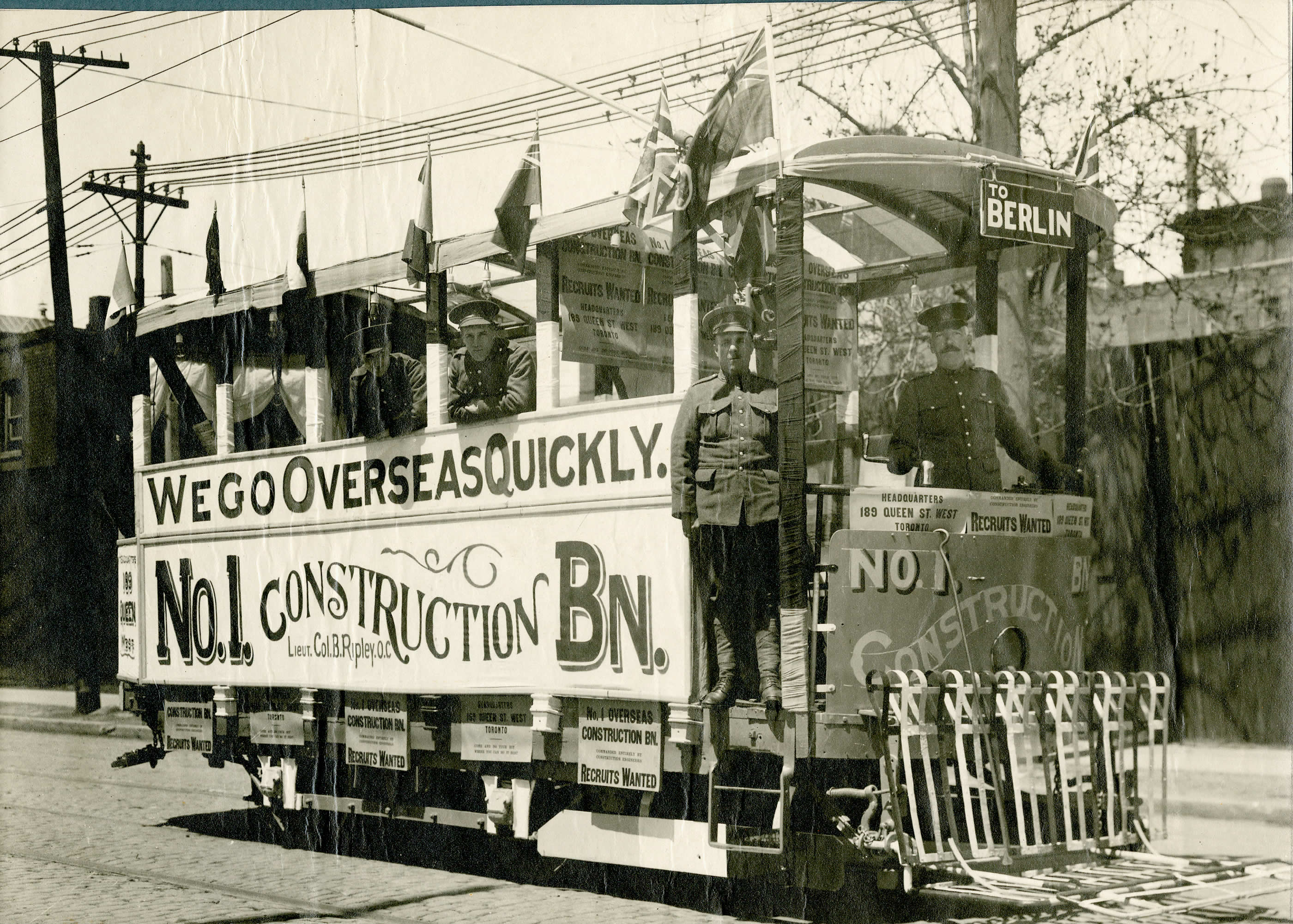daftandbarmy
Army.ca Dinosaur
- Reaction score
- 26,567
- Points
- 1,160
More Good Germans....
The forgotten ruthlessness of Canada’s Great War soldiers
Modern Canadians cannot condemn the sometimes shocking behaviour of their WWI soldiers without knowing the stress of battle, historian Tim Cook says
In 1915, it was the Canadian Corps’ first Christmas on the Western Front and in a trench near Ypres their enemy was inviting them over for a party.
The year before had seen the famous Christmas Truce, when thousands of Allied and Entente soldiers had sprung from their trenches to trade gifts and play soccer in no-man’s-land.
In 1915, it was the Canadian Corps’ first Christmas on the Western Front and in a trench near Ypres their enemy was inviting them over for a party.
The year before had seen the famous Christmas Truce, when thousands of Allied and Entente soldiers had sprung from their trenches to trade gifts and play soccer in no-man’s-land.
“Merry Christmas, Canadians,” said the opposing Germans, poking their heads above the parapet and waving a box of cigars. A Canadian sergeant responded by opening fire, hitting two of the merrymakers.
“When they returned it, one of our lads was shot through the head. That put an end to our Christmas gathering quickly,” Lance Cpl. George D’All wrote in a letter home.
It was a preview of coming developments. Canadian soldiers would emerge from the First World War with a reputation for winning victories that others could not. But even in a war of unparalleled ferocity, enemy and ally alike would remember the Canadians as having been particularly brutal.
British war correspondent Philip Gibbs had a front row seat on four years of Western Front fighting. He would single out the Canadians as having been particularly obsessed with killing Germans, calling their war a kind of vendetta. “The Canadians fought the Germans with a long, enduring, terrible, skilful patience,” he wrote after the war.
The English poet Robert Graves was less charitable. In his 1929 bestseller Good-Bye to All That, he wrote “the troops that had the worst reputation for acts of violence against prisoners were the Canadians.”
Germans developed a special contempt for the Canadian Corps, seeing them as unpredictable savages. In the final weeks of the war, Canadian Fred Hamilton would describe being singled out for a beating by a German colonel after he was taken prisoner. “I don’t care for the English, Scotch, French, Australians or Belgians but damn you Canadians, you take no prisoners and you kill our wounded,” the colonel told him.
Most of the primary sources cited in this article were obtained from books or journal articles written by Tim Cook, a Canadian War Museum historian who has been particularly adept at unearthing a full and unromanticized picture of Canada’s First World War army.
However, Cook is clear that modern Canadians cannot condemn the sometimes shocking behaviour of their First World War soldiers without knowing the stress and chaos of battle. “I’m not passing judgment on these guys 90 years later,” he told Postmedia in a 2006 interview. But he did chastise prior historians for sanitizing the brutality of Canada’s war. The message is particularly resonant given that so many veterans themselves were open to having it known and remembered.
Throughout the war, stretches of the Western Front observed an unofficial “live and let live” policy between Germans and their French or British enemies. By mutual agreement, both sides agreed not to attack the other unless ordered — and would even schedule truces for meals and bathroom breaks.
There are very few recorded instances of this ever happening with Canadians. As Canadian Corps commander Arthur Currie would often boast after the war, his troops prided themselves on killing the enemy wherever and whenever they could.
“We tried to make his life miserable,” Currie said in 1919.
In one particularly cruel episode, Canadians even exploited the trust of Germans who had apparently become accustomed to fraternizing with allied units. Lieutenant Louis Keene described the practice of lobbing tins of corned beef into a neighbouring German trench. When the Canadians started hearing happy shouts of “More! Give us more!” they then let loose with an armload of grenades.
For those Germans unlucky enough to face a trench full of Canadians, one of their greatest fears was nighttime raids on unsuspecting enemy trenches.
Trench raids were the First World War at its most brutal. Hand to hand fighting in crowded, darkened chaos. Whole dugouts of sleeping Germans burned or buried alive by tossed grenades. Terrified defenders mercilessly stabbed or machine-gunned as they fled for the rear.
“There were screams of German soldiers, terror-shaken by the flash of light in their eyes, and black faces above them, and bayonets already red with blood,” wrote Phillip Gibbs of one Canadian raid. “It was butcher’s work, quick and skilful … Thirty Germans were killed before the Canadians went back.”
The forgotten ruthlessness of Canada’s Great War soldiers
Modern Canadians cannot condemn the sometimes shocking behaviour of their WWI soldiers without knowing the stress of battle, historian Tim Cook says
In 1915, it was the Canadian Corps’ first Christmas on the Western Front and in a trench near Ypres their enemy was inviting them over for a party.
The year before had seen the famous Christmas Truce, when thousands of Allied and Entente soldiers had sprung from their trenches to trade gifts and play soccer in no-man’s-land.
In 1915, it was the Canadian Corps’ first Christmas on the Western Front and in a trench near Ypres their enemy was inviting them over for a party.
The year before had seen the famous Christmas Truce, when thousands of Allied and Entente soldiers had sprung from their trenches to trade gifts and play soccer in no-man’s-land.
“Merry Christmas, Canadians,” said the opposing Germans, poking their heads above the parapet and waving a box of cigars. A Canadian sergeant responded by opening fire, hitting two of the merrymakers.
“When they returned it, one of our lads was shot through the head. That put an end to our Christmas gathering quickly,” Lance Cpl. George D’All wrote in a letter home.
It was a preview of coming developments. Canadian soldiers would emerge from the First World War with a reputation for winning victories that others could not. But even in a war of unparalleled ferocity, enemy and ally alike would remember the Canadians as having been particularly brutal.
British war correspondent Philip Gibbs had a front row seat on four years of Western Front fighting. He would single out the Canadians as having been particularly obsessed with killing Germans, calling their war a kind of vendetta. “The Canadians fought the Germans with a long, enduring, terrible, skilful patience,” he wrote after the war.
The English poet Robert Graves was less charitable. In his 1929 bestseller Good-Bye to All That, he wrote “the troops that had the worst reputation for acts of violence against prisoners were the Canadians.”
Germans developed a special contempt for the Canadian Corps, seeing them as unpredictable savages. In the final weeks of the war, Canadian Fred Hamilton would describe being singled out for a beating by a German colonel after he was taken prisoner. “I don’t care for the English, Scotch, French, Australians or Belgians but damn you Canadians, you take no prisoners and you kill our wounded,” the colonel told him.
Most of the primary sources cited in this article were obtained from books or journal articles written by Tim Cook, a Canadian War Museum historian who has been particularly adept at unearthing a full and unromanticized picture of Canada’s First World War army.
However, Cook is clear that modern Canadians cannot condemn the sometimes shocking behaviour of their First World War soldiers without knowing the stress and chaos of battle. “I’m not passing judgment on these guys 90 years later,” he told Postmedia in a 2006 interview. But he did chastise prior historians for sanitizing the brutality of Canada’s war. The message is particularly resonant given that so many veterans themselves were open to having it known and remembered.
Throughout the war, stretches of the Western Front observed an unofficial “live and let live” policy between Germans and their French or British enemies. By mutual agreement, both sides agreed not to attack the other unless ordered — and would even schedule truces for meals and bathroom breaks.
There are very few recorded instances of this ever happening with Canadians. As Canadian Corps commander Arthur Currie would often boast after the war, his troops prided themselves on killing the enemy wherever and whenever they could.
“We tried to make his life miserable,” Currie said in 1919.
In one particularly cruel episode, Canadians even exploited the trust of Germans who had apparently become accustomed to fraternizing with allied units. Lieutenant Louis Keene described the practice of lobbing tins of corned beef into a neighbouring German trench. When the Canadians started hearing happy shouts of “More! Give us more!” they then let loose with an armload of grenades.
For those Germans unlucky enough to face a trench full of Canadians, one of their greatest fears was nighttime raids on unsuspecting enemy trenches.
Trench raids were the First World War at its most brutal. Hand to hand fighting in crowded, darkened chaos. Whole dugouts of sleeping Germans burned or buried alive by tossed grenades. Terrified defenders mercilessly stabbed or machine-gunned as they fled for the rear.
“There were screams of German soldiers, terror-shaken by the flash of light in their eyes, and black faces above them, and bayonets already red with blood,” wrote Phillip Gibbs of one Canadian raid. “It was butcher’s work, quick and skilful … Thirty Germans were killed before the Canadians went back.”





